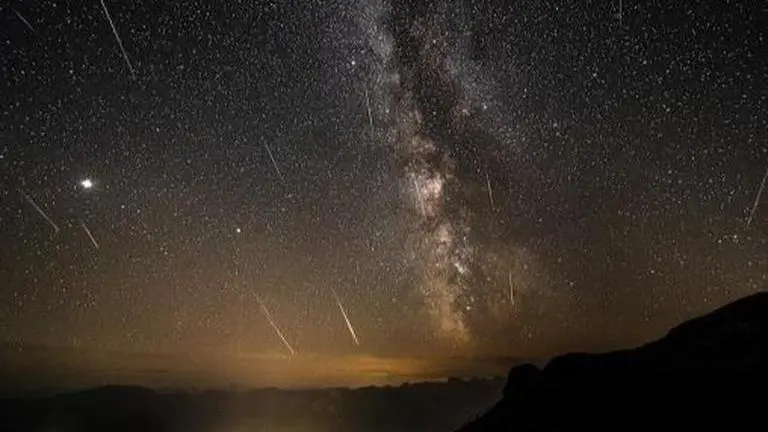Updated 23 May 2022 at 18:05 IST
NASA expects brightest meteor shower on May 30-31 as tau Herculids nears Earth
NASA said that the night of May 30 and the early morning of May 31 will bring a powerful tau Herculids meteor shower courtesy of the SW3 comet. Details here.
- Science News
- 2 min read

The month of May will end with a cosmic surprise thanks to a comet that is now being torn apart. According to NASA, the night of May 30 and the early morning of May 31 will bring a powerful meteor shower courtesy of the comet 73P/Schwassmann-Wachmann or SW3. NASA says that the upcoming meteor shower named tau Herculids might be one of the brightest ones lighting up the sky this year.
Story of the tau Herculids meteor shower
The tau Herculids meteor shower is a result of the debris cloud that resulted from the fragmentation of the 73P/Schwassmann-Wachmann (SW3) comet. After its discovery in 1930, the comet disappeared until reappearing in the 1970s. After its re-discovery, the comet looked normal until 1995 and was hard to spot without a telescope. However, further monitoring revealed that the comet had become about 600 times brighter and was relatively easier to spot with the naked eye.
The astronomers confirmed that the comet's brightness was a result of SW3's fragmentation as it had shattered into several pieces and was leaving an orbital trail made of its own debris. The astronomers noted that the comet was in about 70 pieces when it approached Earth in 2006 and has continued to fragment further since then.
NASA expects a meteor display on May 30-31
NASA has said that if the meteors make it to Earth this year, they would enter the Earth's atmosphere at a relatively slower velocity, approximately 16 kilometres per hour. The upcoming meteor shower is expected to be fairly radiant as it will be high in the night sky during the peak time and since the sky would be Moon-less, the event would be much easier to spot in the northern hemisphere.
Advertisement
"This is going to be an all-or-nothing event. If the debris from SW3 was travelling more than 220 miles per hour (354 km per hour) when it separated from the comet, we might see a nice meteor shower. If the debris had slower ejection speeds, then nothing will make it to Earth and there will be no meteors from this comet", Bill Cooke, who leads NASA’s Meteoroid Environment Office, said in a report.
Published By : Harsh Vardhan
Published On: 23 May 2022 at 18:05 IST
